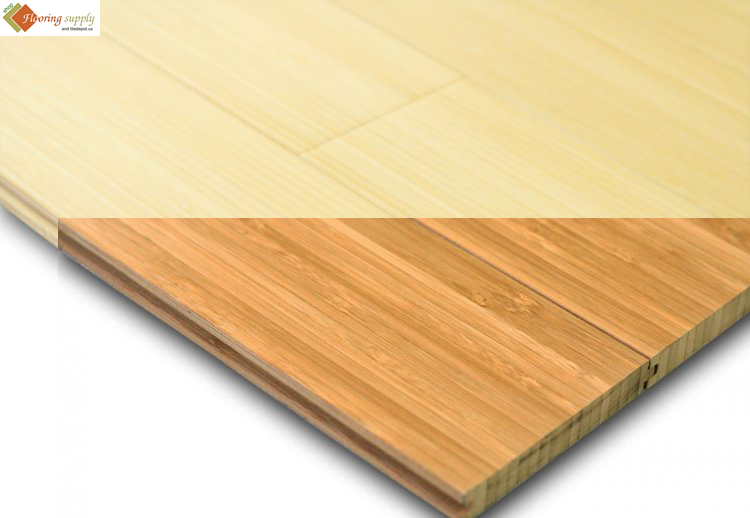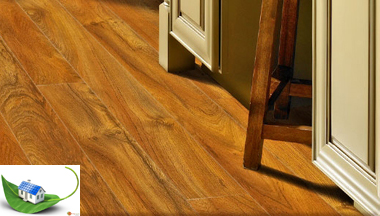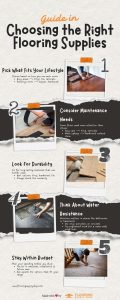
Bamboo floors have increasingly become a favorite choice for homeowners because of their sustainable and eco-friendly nature. They are made from natural bamboo, a rapidly renewable resource, offering a stylish and environmentally conscious alternative to traditional hardwood floors. However, like all types of wood floors, bamboo floors require particular care to maintain their beauty and longevity. This article will provide a comprehensive guide on how to clean your bamboo floors effectively while minimizing wear and tear.
Regular Cleaning
Regular cleaning is the first step towards maintaining the beauty of your bamboo floor. This practice helps keep dirt, dust, and grime at bay, reducing the chances of scratching and damaging your floors. A simple, effective method is using a soft bristle broom or a vacuum cleaner, specifically one without a beater bar. Beater bars can potentially scratch or damage the bamboo flooring, and thus should be avoided. A vacuum cleaner will remove even the smallest dust particles without causing any harm.
Use a dry mop, preferably one made from microfiber for a deeper clean. Microfiber mops are ideal for bamboo floors as they easily pick up dust and dirt without leaving scratches. Make sure to mop in the direction of the bamboo grain to minimize potential streaks or marks.
Damp Mop
While dry cleaning is effective for everyday maintenance, sometimes your bamboo floors might require a deeper clean. This is when a damp mop comes in handy. However, like any hardwood, bamboo floors don’t react well to excessive water. Therefore, using a damp mop rather than a wet one is essential.
To clean, first dampen your microfiber mop in warm water and then wring it out thoroughly. Remember, the mop should only be slightly moist, not dripping wet. Gently run the damp mop over your floor, making sure not to leave any puddles or moisture behind.
Cleaning Solutions
While water is usually enough to clean your bamboo floors, stubborn stains may require a bit more. A specifically designed bamboo floor cleaner or mild hardwood floor cleaner can be beneficial in such instances. These cleaning products are formulated to break down grime without damaging the protective finish of your floor.
One popular cleaning solution is oil soap, which is gentle yet effective for wood floors. Simply dilute the oil soap as directed on the package and apply it with a damp mop. Follow up with a clean, dry microfiber cloth to ensure no soap residue is left behind.
Avoid Steam Mops and Harsh Cleaning Products
While steam mops are often touted as an excellent tool for cleaning hardwood floors, they are not recommended for bamboo floors. The intense heat and moisture from a steam mop can cause bamboo to warp or crack.
Additionally, avoid using harsh cleaning products, such as bleach or ammonia-based solutions. These can strip the finish off your bamboo floors and lead to discoloration.
Addressing Wear and Tear
Despite our best efforts, all floors experience wear and tear over time. Scratches and minor dents are part and parcel of a well-loved home. However, there are preventative measures to limit this. Placing rugs in high-traffic areas, using furniture pads, and keeping pet nails trimmed can significantly reduce the chances of scratching your bamboo floors.
Spot Cleaning
Occasionally, spills or stains may occur on your bamboo floors. When this happens, it’s crucial to act quickly to prevent the liquid from seeping into the bamboo and causing damage. Use a clean, dry cloth to blot the spill immediately, avoiding any further rubbing action that may spread the liquid or stain.
You might need more elbow grease for more stubborn stains, such as ink or shoe polish. A small amount of bamboo or hardwood floor cleaner can be applied to a microfiber cloth and gently rub the stain. Remember to avoid using harsh chemical cleaners that can damage the finish of your bamboo floors.
Polishing Your Bamboo Floors
After a thorough cleaning, a polish can help restore the shine to your bamboo floors. Choose a polish designed specifically for bamboo or hardwood floors. Apply the polish with a microfiber mop or cloth, working in small sections and following the grain of the bamboo. Let the polish dry completely before walking on the floor.
Long-Term Maintenance
Even with regular cleaning, bamboo floors may show signs of aging over time. You might notice some discoloration or dulling of the finish. When this happens, it may be time to consider a professional refinishing. This process involves sanding down the top layer of the bamboo and applying a new finish, effectively restoring your bamboo floor to its original luster.
What tools are needed to clean bamboo floors?
1. Soft Bristle Broom or Vacuum Cleaner: A soft bristle broom or a vacuum cleaner without a beater bar is ideal for regular cleaning. These will remove dust and dirt without scratching the bamboo surface.
2. Dry Mop: A dry mop, particularly one made of microfiber, is great for catching any dust or small particles left behind after brooming or vacuuming.
3. Damp Mop: For a deeper clean, you’ll need a mop to dampen. Again, microfiber is a great material as it is soft and less likely to scratch the surface. Just remember, it should be damp, not soaking wet.
4. Bamboo Floor Cleaner or Mild Hardwood Floor Cleaner: These are cleaning solutions specifically designed to be safe for wood and bamboo floors. They can help in tackling stubborn stains or in providing a deeper clean.
5. Microfiber Cloth: This is handy for drying the floor immediately after mopping or cleaning up any spill. It’s also great for applying floor cleaner directly to stains.
6. Bucket: You’ll need a bucket to hold your cleaning solution and to wring out your mop.
7. Bamboo or Hardwood Floor Polish: A specific polish is useful for maintaining the shine and luster of your bamboo floors. This is not for daily use but can be applied every few months or as needed.
FAQ
1. Can I use a steam mop on bamboo floors?
No, steam mops are not recommended for bamboo floors. The intense heat and moisture from a steam mop can cause bamboo to warp, crack, or discolor.
2. Can I use vinegar to clean bamboo floors?
While vinegar is a popular natural cleaner, it’s generally not recommended for bamboo floors. Vinegar is acidic and can dull the finish of your bamboo floor over time. Sticking with a cleaner specifically designed for bamboo or hardwood floors is best.
3. How often should I clean my bamboo floors?
The cleaning frequency depends on the foot traffic your floors receive. However, as a general rule, dry mopping or vacuuming should be done weekly, while a more thorough clean using a damp mop and cleaner should be done monthly. Remember, the key to bamboo floor longevity is regular cleaning.
4. Can I use oil soap to clean bamboo floors?
Yes, oil soap can be used to clean bamboo floors. It’s a gentle cleaner that can effectively remove dirt and grime without damaging your floor. Remember to dilute the oil soap as directed on the package and avoid leaving any soap residue behind.
5. How do I remove stains from my bamboo floor?
First, clean the area with a damp cloth for common stains. If the stain persists, use a bamboo or hardwood floor cleaner. Apply the cleaner to a soft cloth and gently rub the stain until it’s gone. Avoid using harsh chemical cleaners that can damage the finish of your bamboo floors.
6. How do I restore the shine to my bamboo floors?
Applying a polish specifically designed for bamboo or hardwood floors can help restore shine. Make sure to clean the floor thoroughly before applying the polish, and let it dry completely before walking on it.
7. How do I prevent scratches on my bamboo floors?
Placing rugs in high-traffic areas, using furniture pads, and keeping pet nails trimmed can significantly reduce the chances of scratching your bamboo floors. Regular cleaning also helps minimize dust and dirt that can cause scratches.
Remember, it’s always a good idea to consult with the manufacturer’s instructions or a flooring professional when you’re unsure about cleaning and maintaining your bamboo floors.
In summation, the role that diligent and appropriate care plays in the preservation of bamboo flooring cannot be overstated. Bamboo, an increasingly popular flooring choice due to its sustainable sourcing and aesthetic appeal, necessitates specific maintenance practices to uphold its enduring quality and visual allure.
Adherence to correct cleaning methodologies, the utilization of appropriate equipment, and the selection of suitable cleaning agents are all imperative facets of bamboo floor maintenance. Swift action in addressing inadvertent spills or stains is highly recommended, alongside a conscious effort to abstain from potentially detrimental practices such as using steam mops or harsh chemical cleaners.
Furthermore, it is vital to acknowledge that despite their robustness, bamboo floors are not impervious to daily use’s regular wear and tear. As such, incorporating preventative measures can notably extend the lifespan and aesthetic continuity of your bamboo flooring. By observing these guidelines, the integrity of your bamboo floors will be effectively safeguarded, providing you with a sustainable and attractive flooring solution for years to come.

